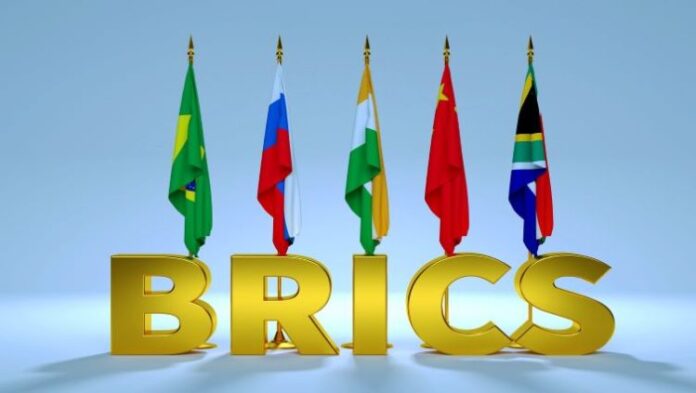BRICS will hold its 15th heads of state and government summit in Johannesburg, South Africa from August 22-24. The summit will be the first in-person meeting of the group since the corona virus pandemic.
BRICS is a bloc of emerging world economies – Brazil, Russia, India, China and South Africa – aimed at developing trade and economic cooperation among its member nations, reports AlArabia English News service.
The world leaders expected to attend the summit include South African President Cyril Ramaphosa, Chinese President Xi Jinping, Brazil’s President Luiz Inacio Lula da Silva and Indian Prime Minister Narendra Modi.
Russian President Vladimir Putin will not attend the summit, Moscow announced in July. His absence is due to an arrest warrant issued against him by the International Criminal Court (ICC). If he arrives in South Africa, he would be subject to the ICC’s warrant.
Instead of Putin, Russia’s foreign minister Sergei Lavrov will represent Moscow at the summit. Putin, however, will not miss the meeting. According to Russian state media, he will reportedly participate in the conference via video.
Russia organized BRICS’s first meeting in 2006, with foreign ministers from Brazil, Russia, India and China in attendance. They discussed the economic bloc’s shared interests and common challenges – the most prominent being the rising US influence on world order.
BRICS has also extended invitations to 67 world leaders across Africa, Latin America, Asia and the Caribbean.
Twenty dignitaries will attend the summit, including the UN Secretary General Antonio Guterres, the African Union Commission Moussa Faki Mahamat Chairperson and the President of the BRICS’ New Development Bank. According to Reuters reports, prominent business leaders in the region are also expected to be in attendance.
Other than developing economic relations and trade infrastructure, one of the most pressing issues on the summit’s agenda is BRICS’ expansion, with several nations from Asia, Africa and Europe vying to join the bloc.
While the group’s stance on expansion is divided – China and Russia have embraced it, but India remains opposed to Beijing’s plans – as many as 40 countries have reportedly shown interest in joining the bloc formally or informally. These include Algeria, Belarus, Saudi Arabia, UAE, Iran, Indonesia, Argentina, Ethiopia and Egypt.
Another item on the bloc’s agenda that has gained traction and attracted media headlines is the push from BRICS to conduct more cross-border trade in local currencies to reduce the group’s reliance on the US dollar.
Several reports of a new BRICS’ currency also emerged in the months preceding the summit, with some economic experts claiming that the economic bloc may, in the future, push for de-dollarization – reducing the US dollar’s dominance in global trade and finance.
However, according to a Bloomberg report, South Africa’s ambassador to the bloc, Anil Sooklal, said there are no plans to discuss replacing the US dollar.
According to World Bank statistics, BRICS accounts for more than 40 percent of the world’s population, and the combined GDP is more than $23 trillion – 26 percent of the global economy.
The acronym “BRICS” was originally coined by Goldman Sachs economist Jim O’Neil in 2001. South Africa was added to the group in 2010 when the bloc extended its membership to another continent.

















